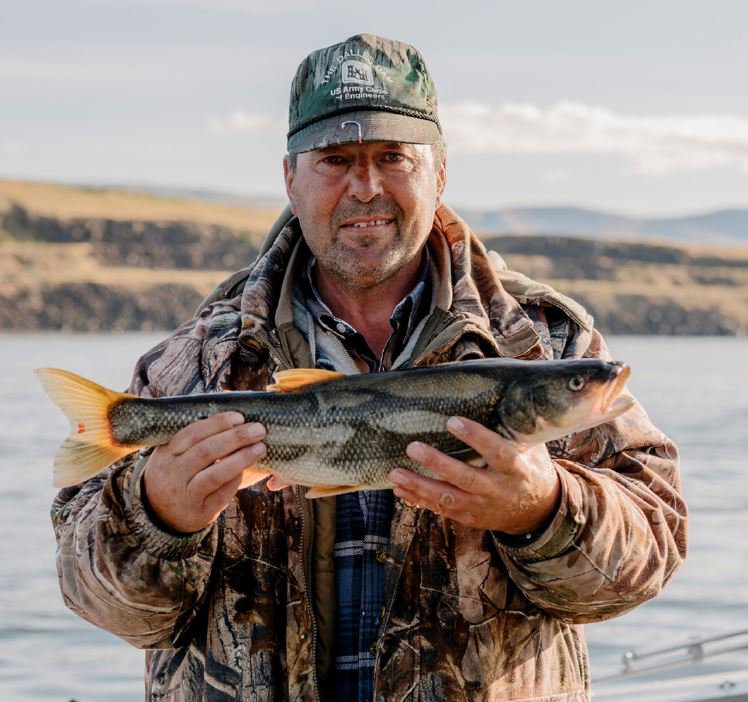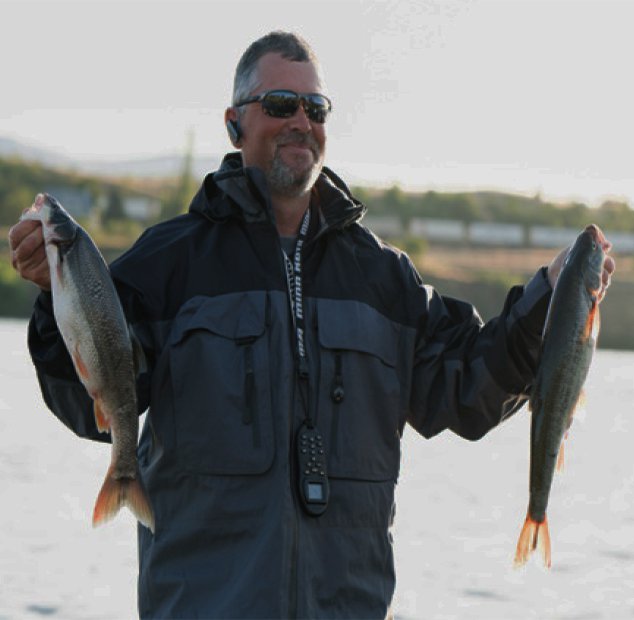Long-term Project to Reduce Northern Pikeminnow Predation on Salmon Finds Success
- January 19, 2024
- Carol Winkel

At its January meeting, the Council was briefed on one of the Council’s longtime projects to reduce the impact of a key predator on migrating juvenile salmonids in the Columbia River Basin—northern pikeminnow.
“At the time of the project’s inception, northern pikeminnow were a prominent predator and a priority for fish managers,” said Council Project Review and Implementation Manager Mark Fritsch in his introduction. Noting that over time it has proven to be effective in meeting its goals, he pointed to the extensive public outreach of its sport-reward fishery as a key tool in its success.
“The project’s goal was to remove 10 to 20 percent of predator-sized northern pikeminnows each year,” said Allan Martin, project manager for Pacific States Marine Fisheries Commission. The commission works in partnership with the states of Oregon and Washington, with funding from the Bonneville Power Administration, to implement the project.
Eric Winther, project lead for the Washington Department of Fish and Wildlife, described their accomplishments. When the region’s dams were built, the habitat became more favorable for pikeminnow and less so for salmon. The dams created a perfect hunting ground, creating more slack-water areas where predators can hide, while simultaneously increasing the time it takes for juvenile salmon to complete their outmigration, making juvenile fish easy pickings for the pikeminnow.
The project created a public fishery that rewards recreational anglers for harvesting predator-sized northern pikeminnow. Based on a tiered reward level, the fishery is a way to reduce predation while also gathering data from tagged fish that are caught. The fishery is designed to remove a percentage of northern pikeminnow that are large enough to eat juvenile salmon and steelhead, not completely remove them, since they are a native species in the Columbia River Basin. The sport-reward fishery has successfully reached the 10 to 20 percent exploitation objective each year since 1997.

“By targeting larger pikeminnow for removal, over time, it shrinks the average-sized fish in the population; smaller fish eat less smolts, and that’s where your predation savings come in,” said Winther.
From May through September, the program is in effect from the mouth of the Columbia all the way up to Priest Rapids Dam above the Tri-Cities, and from the mouth of the Snake River all the way up to Hells Canyon Dam.
Since 1991, an average of 165,000 northern pikeminnow have been harvested each year by the sport-reward fishery participants. In 2023, a mobile app was released, making it even easier for people to register and participate in the fishery.
The biggest amount paid to a pikeminnow angler? A whopping $119,000 over a five-month period in 2016.
Grant Waltz, project lead for the Oregon Department of Fish and Wildlife, explained the project’s monitoring and evaluation component, which is critical to the management of the fishery.
By using electrofishing to collect data, managers can determine the impact of the project and whether reducing pikeminnow opens opportunities for other predators of salmonids like smallmouth bass and walleye.
The program is exploring options to acquire additional data, through the detection of previously tagged juvenile salmon and steelhead that are then consumed by northern pikeminnow, smallmouth bass or walleye. These tagged and then consumed salmon and steelhead may provide data that can be used in a similar way for avian research, as suggested by the Council's Independent Science Review Panel.
Program representatives are involved in regional conversations with technical experts from three major predatory groups: birds, fish, and marine mammals. These meetings are intended to better coordinate and plan work to understand, and potentially mitigate, the impacts of predation from these groups on salmon and steelhead.
When the project began over 30 years ago, the hydrosystem altered the habitat in ways we’re still grappling with, and climate change is another challenge.
“As we see increasing temperatures and warming rivers, what can we expect?” asked Fish and Wildlife Director Patty O’Toole.
“Smallmouth bass and walleye prefer higher temperatures, so they should do better” noted Art Martin, Columbia River Coordination Section Manager for Oregon Department of Fish and Wildlife. “With pikeminnow, we’re not sure. But monitoring gives us a decent baseline of information. We need to be thinking about this in the future.”
Learn More
- Listen: America Outdoors podcast on the pikeminnow program with Eric Minther
- Northern Pikeminnow Sport-Reward Program
- Predation by Fish



